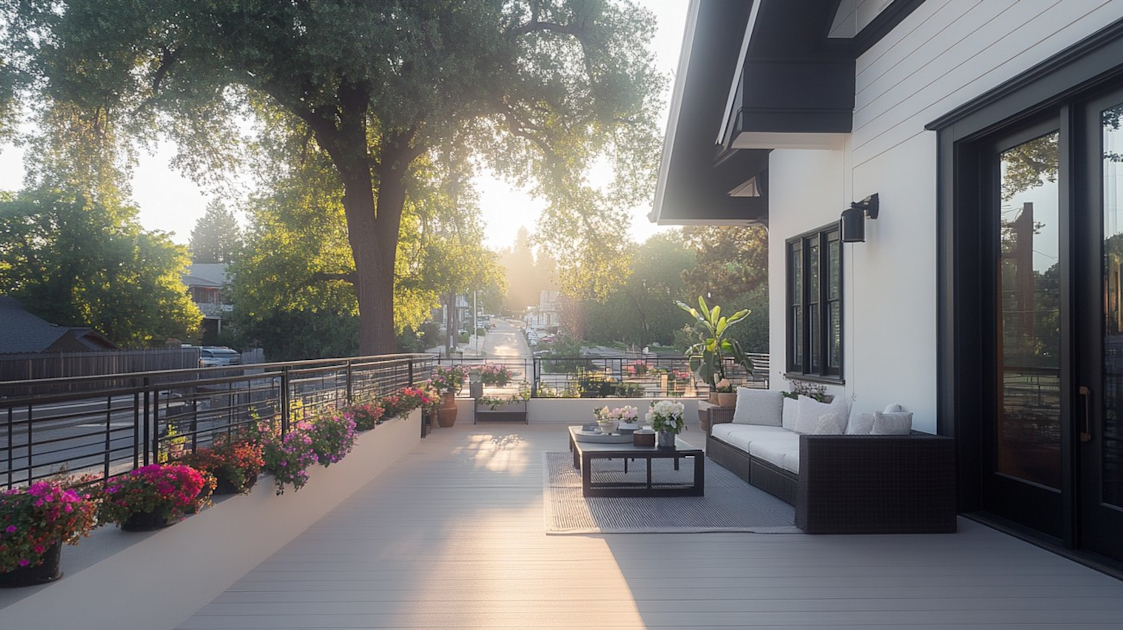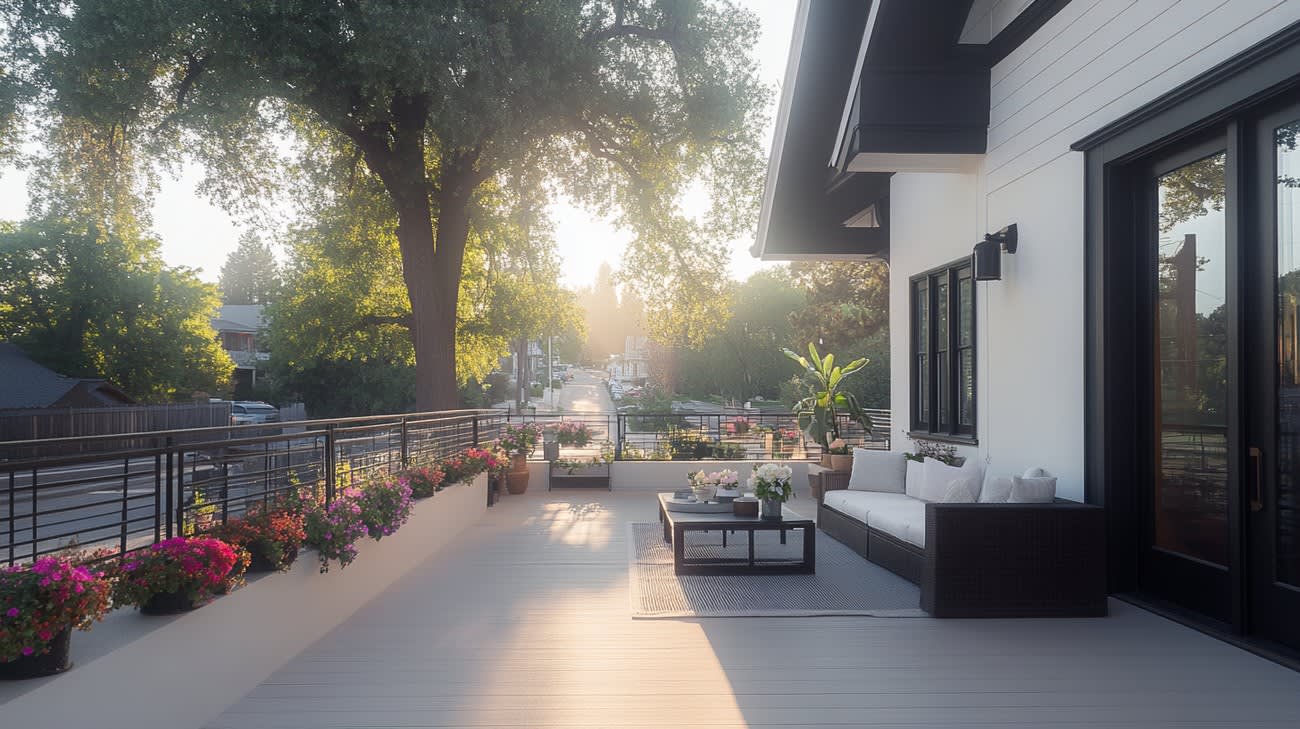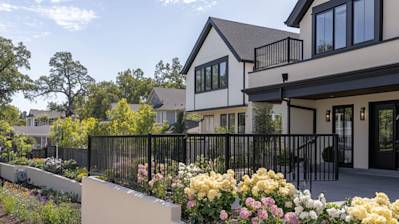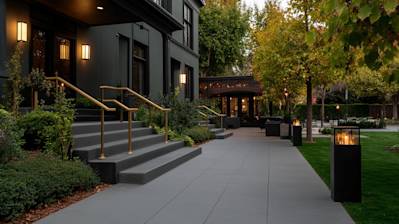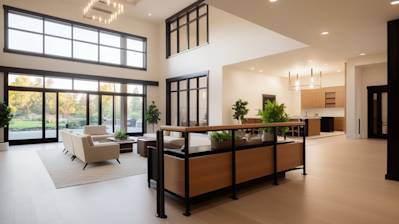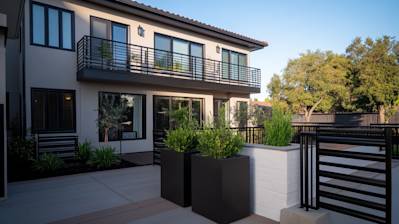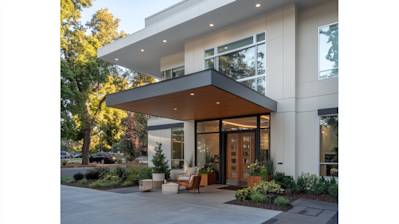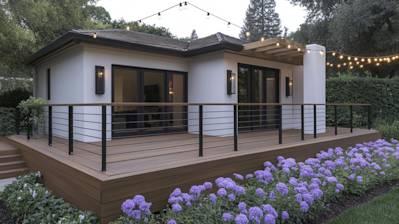When it comes to enhancing the aesthetic appeal and safety of your home, the value of porch railings cannot be overlooked. This integral element can magically transform the look of your porch, adding an element of style and elegance while ensuring safety. Whether you’re planning an exterior makeover or building a new home, understanding the ins and outs of porch railings can be beneficial. This detailed article provides a comprehensive look at porch railings, from their importance to different types, materials and maintenance tips.
Importance of Porch Railings
Before delving into the various types of porch railings and the materials used, let's quickly touch base on the importance of these seemingly simple fixtures:
Aesthetic Appeal: Porch railings add aesthetic value to your home, enhancing its curb appeal. With plenty of design and material options available, they can match and uplift the overall architectural style of your home.
Safety: Railings serve as a barricade, preventing falls from the porch, making them a must-have, especially in homes with young children or the elderly.
Privacy: In houses facing busy streets, porch railings can provide a sense of privacy.
Value Addition: Good-quality and well-maintained railings can increase the resale value of your home.
Types of Porch Railings
When it comes to porch railings, there is a wide array of options available in terms of style and design. Here are a few popular choices:
Traditional Railings: Typically characterized by their straight lines and simplicity, these railings can match almost any architectural style and are easy to install.
Craftsman Railings: Known for their intricate designs, craftsman railings often feature geometric shapes and patterns. They are a great choice for homeowners looking for a touch of luxury.
Modern Railings: If you're after a sleek, minimalist look, modern designs might be the perfect fit. They usually feature non-traditional materials such as metal and glass.
Rustic Railings: These are typically made of raw, natural materials like logs and branches, perfect for mountain or countryside homes.
Porch Railing Materials
Following are the primary materials used in porch railing construction:
Wood: Traditional, elegant and versatile, wood can be customized into any style. However, wooden railings require regular maintenance.
Vinyl: Vinyl railings are popular due to their affordability, durability, and low maintenance. They are also available in various styles and colors.
Metal: Metal railings such as wrought iron, steel, and aluminum offer strength and durability. While they are relatively low-maintenance, they may rust over time if not properly cared for.
Composite: Composite railings are made from a mixture of plastic and wood fibers. They offer the aesthetics of wood without the associated maintenance issues.
Installing Porch Railings
The process of installing porch railings varies based on the type and style of the railing, as well as the material used. Generally, it includes measuring the area, prepping it, and then methodically attaching the railings. Hiring professionals for the installation is recommended to ensure safety and accuracy.
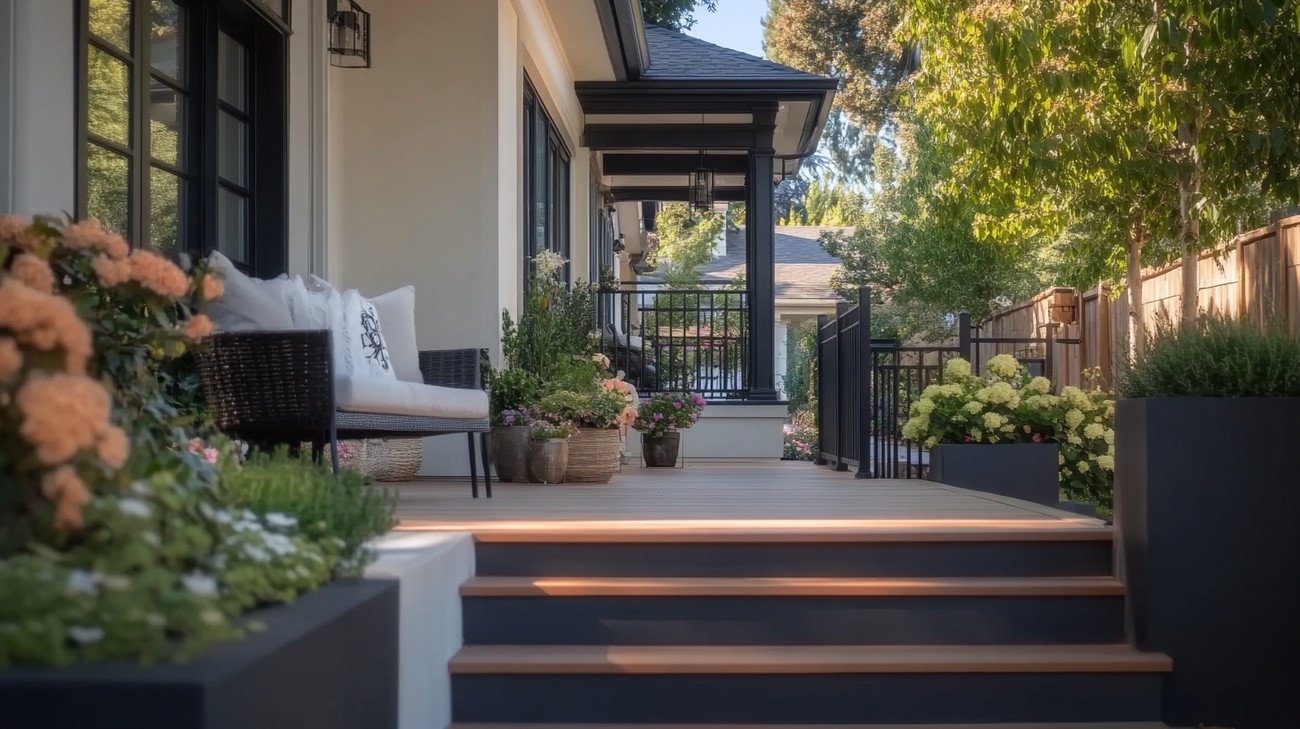
Frequently Asked Questions about Porch Railing
What Materials Are Commonly Used in Porch Railing?
There's a wide variety of materials available for porch railing, which include wood, metal, vinyl, and composite materials. Wood railings are traditional and can be customized in numerous ways, making them a popular choice. Meanwhile, metal railings, particularly aluminum and steel, are durable and require little maintenance. Vinyl railings are affordable and easy to install, while composite railings mimic the appearance of wood but with added durability and low-maintenance.
Can I Install Porch Railing Myself?
Yes, installing porch railing can be a DIY project, providing you're comfortable with using basic tools and have some general understanding of carpentry. There are numerous pre-made kits available that come with all the required components and detailed instructions. However, if you're dealing with custom designs or specific materials, it's recommended to hire a professional to ensure accurate and stable installation.
What Is the Standard Height for Porch Railing?
The International Residential Code (IRC) suggests that the standard height for porch railings should be at least 36 inches for residential homes. However, it's essential to check with your local building codes as the regulations may vary depending on your specific area.
How to Maintain Wooden Porch Railing?
Maintenance for wooden porch railings involves periodic cleaning, staining or painting, and checking for rot and insect damage. Use soapy water and a soft brush to clean the railings gently. To maintain their aesthetic appeal and durability, consider repainting or re-staining the railings every couple of years. If you notice any signs of rot or insect damage, address these issues promptly to prevent further deterioration.
How Often Should I Replace My Porch Railing?
Porch railings typically have a life expectancy of about 10-20 years, depending on the material type and the maintenance they receive. However, you should replace your porch railing immediately if you notice significant signs of wear and tear or if the railing becomes unstable, no matter the age.
How Much Does Porch Railing Cost?
The cost of porch railing can vary greatly depending on the materials used, the complexity of the design, and whether you hire a professional for installation. On average, you could expect to pay between $30 to $50 per linear foot for wood railing, and metal options may range between $50 to $120 per linear foot. The costs for composite and vinyl railings fall somewhere in between.
Can I Customize My Porch Railing?
Absolutely! Customizing your porch railing allows you to showcase your personal style and add a unique touch to your home's exterior. From different color options, material choices, and design styles, there are endless possibilities when it comes to customizing your porch railing.
Can Porch Railings Be Recycled?
Yes, many porch railing materials can be recycled. Metal and vinyl railings, for example, are recyclable. Even wood can be recycled or repurposed for different uses when it's no longer needed as railing. Before disposing of your old railings, it's worth investigating local recycling options.

Pros
Enhanced Safety
Protection from Accidents
One of the most profound advantages of a porch railing is that it bolsters the safety of your house. The railing will reduce the possibility of falls, especially for children and elderly adults. Whether your porch is several feet off the ground or just a few steps up, a porch railing provides a barrier that can prevent painful and potentially serious accidents.
Compliance with Building Codes
Most local building codes require a railing for decks or porches that are a certain height off the ground. If you plan to sell your home, having a porch railing can make the process smoother because it signals to potential buyers that your home is up to code.
Increased Property Value
Curb Appeal
Porch railings, when right chosen and installed, can significantly boost the curb appeal of your house. They can add a level of elegance and sophistication or a homey, rustic appeal depending on the style of the railing.
Return on Investment
The cost of installing a railing can also be offset by the increased property value. When properly maintained, a porch railing can last for many years, thus providing a substantial return on investment.
Versatility in Design
Porch railings come in numerous designs, materials and finishes. This allows you the flexibility to choose a design that matches your home's architectural style or your personal taste. You can pick from traditional wood railings, sleek metal ones or even modern glass railings.
Additional Seating Space
With a sturdy and well-designed porch railing, you can create additional seating space. Along with some cushions and comfortable outdoor furniture, a wide railing can double as a spot for guests to sit and enjoy the outdoors during gatherings.
Cons
Maintenance
Routine Upkeep
As with any part of your property, porch railings require regular maintenance. For instance, wooden railings need to be periodically scraped, sanded, and repainted to prevent rot and general wear. Similarly, metal railings may require rust protection.
Potential for Damage
Porch railings, particularly those made from wood, are susceptible to a variety of potentially detrimental forces, such as insects, water damage, and extreme weather conditions. In addition to regular maintenance, these problems may necessitate more frequent replacements and repairs and can increase the total cost of ownership.
Installation
Complexity
Installing a porch railing can be tedious and complex, particularly if you lack the necessary carpentry skills. Even if you opt to hire a professional, it will add to the overall cost and time required for the installation.
Permits
In some regions, you may need a building permit to install or replace a porch railing. This can delay the installation process and possibly incur additional costs.
Limited Mobility
While a porch railing improves safety, it can also limit the flow of movement on and off the patio. This could be inconvenient, especially during social gatherings when people frequently move in and out of the house.
Aesthetic Limitations
Despite the variety of designs available, finding a porch railing that matches your home's exterior perfectly can be challenging. Sometimes, a poorly chosen design might end up detracting from your home's aesthetic appeal, rather than enhancing it.

Myths / Misconceptions about Porch Railing
There are a lot of misconceptions about porch railings. These misunderstandings can lead homeowners to make poor decisions when choosing and maintaining their porch railings. Whether you've always had a porch or you're just brainstorming about creating one, it's crucial to know the myths from the truths. This view will help you to make informed decisions about your porch railings.
Myth 1: All Porch Railings are the Same
Myth 1.1: One Material is as Good as the Other
One urban myth is that all porch railings are the same without variations. However, porch railings can be made of various materials such as wood, vinyl, wrought iron, aluminium, and composite. Each material has its unique strengths and weaknesses. For instance, wooden railings have a natural and warm aesthetic but require regular maintenance to prevent rotting and warping. Conversely, metal railings are durable and resilient but may rust if not properly treated.
Myth 1.2: Porch Railing Design Doesn't Matter
Another misconception under this category is that the design doesn't play any role except aesthetics. The reality is that the design can significantly impact the safety and utility of the railing. For instance, a poorly designed porch railing may not provide enough protection against falls, especially for children and the elderly.
Myth 2: Porch Railings are Merely Decorative
Many people believe that porch railings are only for enhancing the aesthetic appeal of their homes. While they indeed increase architectural interest and beauty, porch railings serve crucial roles beyond decoration. They provide safety by preventing falls and create an enclosed space that may be necessary for privacy or guiding foot traffic.
Myth 3: Porch Railings Don't Require Maintenance
Myth 3.1: Once Installed, No More Work
Some homeowners believe that porch railings don't require maintenance once installed. This belief is misleading since like other structures, railings are subject to wear and tear and environmental impacts. Regular checks are needed to ensure the railings are in good condition and safe to use.
Myth 3.2: All Railings Require the Same Maintenance Level
Different materials used in constructing railings will require different maintenance levels. For example, wooden railings tend to require more maintenance, such as frequent painting or sealing, to prevent them from rotting or warping. On the other hand, metal railings may need regular checks for rust, while vinyl railings are low maintenance but might require cleaning from time to time.
Myth 4: Installing Porch Railings is a DIY Job
Myth 4.1: All I Need is a Drill
The notion that all you need to install porch railings is a power drill can lead to improper installations that not only compromise the appearance but also the safety of the railings. Installing porch railings can be a complex task calling for precise measurements and understanding of both hardware and materials used.
Myth 4.2: DIY Installation Can Save Money
While it's true that doing it yourself can save you initial labor costs, it could also result in more problems and repairs down the line due to incorrect installation. Having a professional do the installation means that you'll have the job done right the first time, saving you future repair costs.
Myth 5: You Don't Need Building Permits for Porch Railings
The idea that you don't need building permits to install porch railings is a common and potentially costly misconception. In many jurisdictions, adding or altering porch railings is considered a structural modification. Therefore, a permit may be necessary before work commences. Failure to comply with these regulations can result in expensive fines or the need to remove the work.
Understanding these myths about porch railings will help guide informed decisions whether you're installing new railings or maintaining your existing ones. Remember, your porch is often the first impression that visitors have of your home. Make it count with a beautiful, efficient, and safe porch railing.
Summary
So, after discussing various aspects, it's clear that the porch railing isn't just a functional aspect of a house, but it can significantly contribute to the aesthetic appeal as well. Not to forget, safety also plays a crucial role. Nowadays, you can choose from an array of designs, materials, and colors that match perfectly with the setting of your porch. If you're keen on home repairs, installing a porch railing can also turn out to be a fun DIY project.
We've seen how a porch railing serves different purposes. From offering safety to enhancing the aesthetic value of your homes, it performs a significant role. Besides, from traditional to modern designs, there's a variety to meet individual needs. So, if you're planning to revamp your outdoor space or build a new one, always think about incorporating porch railing. You can even get creative and customize to add a personal touch!
Now you know how important a porch railing can be. Not only does it provide a safety barrier, but it also contributes towards creating a specific look and feel for your home. A well-chosen porch railing can add charm and character to your space. On the flip side, an ill-fitting or badly installed railing can detract from your home's appearance. Therefore, give it much thought before you dive into redesigning your porch space. We hope our discussions about porch railings have provided you with useful insights!
About Ornamental Solutions
Ornamental Solutions, based in sunny Sacramento, CA, is your go-to business for all things ornamental. We bring a splash of charm and character to your spaces with our wide-ranging decorative solutions. Our talented team takes pride in turning everyday environments into artistic displays, crafting unique pieces that enchant the eyes and capture imaginations. Whether it's for your home, your garden, or your official spaces, we've got you covered with our superior workmanship, creative designs, and customer-centric approach. Serving Sacramento and surrounding areas, we look forward to infusing your spaces with that special touch of beauty only Ornamental Solutions can provide. Experience the magic of our decor today!

